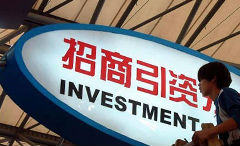China’s high-quality growth still powerhouse for global development
2018-03-07
Xinhua
BEIJING — Though China has shifted away from high-speed growth to high-quality and long-term growth, its vibrant and resilient economy continues to be the stabilizer and powerhouse of global development.
The global economy displayed an uptrend in 2017, and it is widely held in the international community that the Chinese economy driven by structural adjustment, consumption upgrading and innovation contributed greatly to its recovery.
According to the World Bank, China contributed 34 percent to the world’s economic growth from 2012 to 2016, more than the contribution by the United States, the European Union and Japan combined.
Seeking to boost economic development while at the same time to improve social equality and sustainability, the Chinese government has begun a shift from targeting rapid growth above all else to a new normal of slower but more efficient growth in 2014.
Over the past five years, China has lifted 68.53 million people out of poverty, which is, as World Bank President Jim Yong Kim has said, “one of the greatest stories in human history.”
Furthermore, China has vowed to eradicate extreme poverty by 2020, a move contributing to the UN 2030 Sustainable Development Agenda.
On climate change, China has also been pioneering international efforts to control global warming and has taken the lead to honor the Paris Agreement, which has been lauded widely.
Aiming for continuous reductions in the release of major pollutants in 2018, the government will redouble efforts to protect and restore ecosystems through upgrading industries among other ways, Premier Li Keqiang said on March 5 when delivering a Government Work Report at the ongoing annual session of the National People’s Congress (NPC) — China’s national legislature.
And the country also contributes to world economic growth with its leading edges in high-speed rail, e-commerce, mobile payment, artificial intelligence (AI) and the sharing economy.
China’s e-commerce accounts for 40 percent of the world’s total, larger than that of the United States, Japan, Britain, France and Germany put together.
As part of the world’s most popular international public goods, the initiative on the construction of the Silk Road Economic Belt and the 21st Century Maritime Silk Road (the Belt and Road Initiative), proposed by President Xi Jinping in 2013 to enhance international trade, infrastructure and financial cooperation among others, forges a new platform for fresh sources of economic growth and shared prosperity opportunities for other countries.
The cornerstone of the initiative — achieving shared growth through collaboration and equal participation — points to a new direction for improved global economic governance and offers a new model for international cooperation.
While striving for its national rejuvenation and the well-being of the Chinese people, China takes it as its own mission to make new and greater contributions in working with other nations worldwide to build a community with a shared future for mankind.


